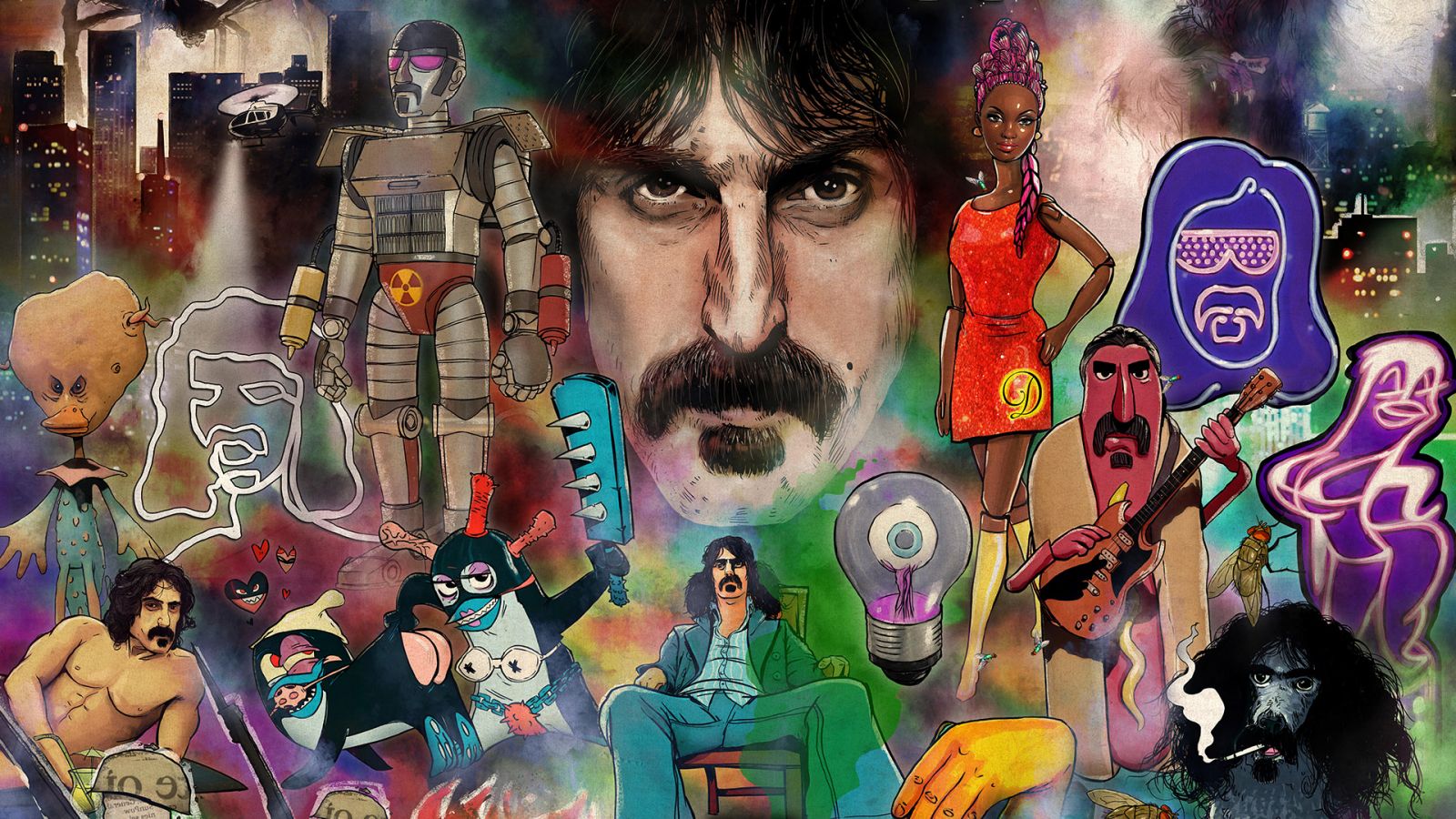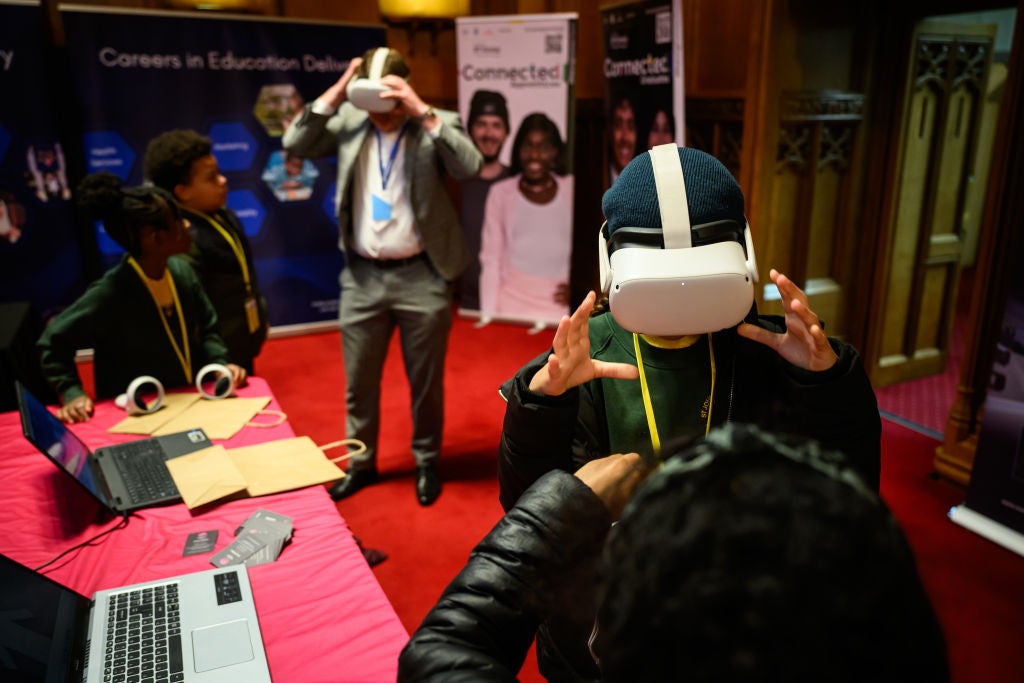
The metaverse: a virtual world where users share experiences and interact in real-time within simulated scenarios. The term’s introduction in Neal Stephenson’s 1992 novel Snow Crash is almost stuff of legend among the tech community. However, other pieces of literature – some more widely known than others – have toyed with the concept since then. By analyzing these pieces of work, we may gain insights into what a real-life metaverse will eventually look like. Spoilers ahead!
Neal Stephenson’s Snow Crash, 1992
The Metaverse in Snow Crash is a virtual reality-based successor to the internet. It is accessed through terminals that project a high-quality feed onto a user’s goggles. Users appear in the Metaverse as avatars of any form but cannot be taller than the user is in real life. There are also public terminals that are lower quality, and which present their user’s avatar in grainy black-and-white. There is a subculture of people who choose to remain continuously connected to the Metaverse, nicknamed “gargoyles”.
The Metaverse is a black, perfectly spherical planet with a single hundred-meter-wide road, the Street, running around the planet’s 65,536 km (216 km) circumference. Virtual real estate is owned by the Global Multimedia Protocol Group and can be bought to develop buildings. Essentially, the closer to the Street the real estate, the more expensive it is.
Having different experiences based on an individual’s ability to pay is certainly a feature that could arise in our world, especially with the growth of microtransactions and pay-to-win videogames. Virtual real estate is also a concept we are already seeing, with celebrities and companies from Snoop Dogg to HSBC buying up virtual land on platforms such as The Sandbox. Many have moved early, in anticipation of the growing need for virtual space, but whether this investment will pay off in the long term is yet to be seen.
Tad Williams’ Otherland series, 1996-2001
In Williams’ tetralogy, a full-immersion virtual reality (VR) world referred to as “the Net” has been created. It can be accessed in a variety of ways, including through a flat-screen TV, VR goggles, full-body immersion in a pressure-sensitive gel, and an expensive direct neural implant called a “neurocannula”.
Within the series, children are falling into deep comas that seem to be related to their use of the Net. As this is investigated by a ragtag group, they discover Otherland, a mysterious network within the Net specially commissioned by a cryptic organization known as the “Grail Brotherhood”. This group comprises some of the world’s wealthiest and most powerful. It is revealed that Otherland was created for Grail Brotherhood members to upload their brains and avoid the death of their natural bodies.
How well do you really know your competitors?
Access the most comprehensive Company Profiles on the market, powered by GlobalData. Save hours of research. Gain competitive edge.

Thank you!
Your download email will arrive shortly
Not ready to buy yet? Download a free sample
We are confident about the unique quality of our Company Profiles. However, we want you to make the most beneficial decision for your business, so we offer a free sample that you can download by submitting the below form
By GlobalDataStudies into the effects of VR have largely focused on short-term side effects of dizziness and nausea. However, little has been done on the consequences of routinely spending extended periods in VR. This is certainly an area that needs to be explored before the metaverse becomes mainstream. Further, the wealthy often do try to avoid their deaths in our world. Elon Musk’s company Neuralink is working towards a brain-machine interface technology, and Jeff Bezos has invested in TAltos Labs, a company looking into anti-aging research and biological reprogramming. Maybe our metaverse will be the next focus for these immortality-seeking rich.
Ernest Cline’s Ready Player One, 2011
Set in the 2040s, Ready Player One lays out a world ravaged by pollution, global warming, and overpopulation. This has caused widespread social problems and poverty, and nearly everyone has turned to “OASIS” to escape. OASIS is a free-to-play VR simulator accessed using visors and haptic technology, functioning both as a massively multiplayer online role-playing game (MMORPG) and as a virtual world. Its currency is also the most stable in the real world.
In the book, the creator of OASIS has died and left an Easter egg that, when found, would give its finder the creator’s entire fortune, ownership of his corporation, and complete control of OASIS itself. Wade Watts, the main character, has to battle against Innovative Online Industries (IOI), a multinational corporation, to find the Easter egg. IOI wants to take control of OASIS and monetize it through monthly subscriptions and ads. IOI’s means are nefarious; cheating and bribing participants and even going so far as to kill them in the real world.
The metaverse in Ready Player One, like in many other pieces of work, is incredibly escapist. The desire to be someone else in a world of your own creation certainly could be a pull for many when the real-world metaverse is fully formed. However, OASIS’s currency being the most stable may seem far off when many metaverse platforms rely on cryptocurrencies—a market that is currently crashing. The main villain being a money-grabbing corporation is also a realistic worry when Meta, a company known for data monetization and privacy issues, wants to be a frontrunner in metaverse technology.
Jennifer Haley’s The Nether, 2013
The final piece of work is a play set in the near future when the internet has evolved into the Nether, a vast network of VR realms. Users may log in, choose an identity, and indulge any desire. More and more people are choosing to become “shades” who go on life support and stay logged in forever.
Within the Nether is a realm called The Hideaway where paedophiles may live out their fantasies with child avatars. It is revealed that these children are actually full-grown adults, but the extent to which they are manipulated into those positions is not made clear. The realm’s creator also ensures strict rules are followed regarding background checks and anonymity, and no personal information is allowed to be shared between avatars. As The Hideaway’s creator is interrogated over these actions, the main issue becomes whether actions online bleed back into reality and, as such, should be legislated in real life.
Although the idea of escaping into the metaverse is exciting for some, minimal moderation presents very real dangers. The darkest and most-difficult to track corners of our internet are more than likely to proliferate within the metaverse. Indeed, online watchdogs are already seeing increasing accounts of women being sexually assaulted and harassed in the metaverse. Prosecuting these actions brings up difficult questions. However, as the metaverse becomes more widely available, safeguarding measures need to be put in place to ensure that everyone can feel safe.






Related Company Profiles
HSBC Holdings Plc
IOI Corp Bhd